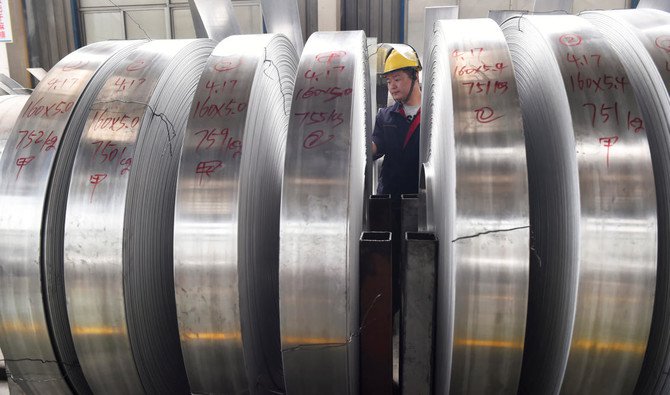Media Report

- Bloomberg reports: "Donald Trump's assault on trade with China is moving from tweeted threats and abortive talks to the real-world. Purchasing manager index readings for June released on Saturdayshowed a gauge of export orders tumbling into contraction, the clearest sign yet that the oncoming trade war is having a real, negative impact on growth. From this Friday, the world's two largest economies are set to begin charging higher tariffs on each other's goods, marking a major escalation of the conflict. That's focusing minds among policy-makers in Beijing, as China now faces the tricky task of balancing support for an economy that was already slowing with its ongoing desire to curb excess credit. As the increasingly-important services sector remains robust, there's little need to open the stimulus taps too widely for now, provided the nation remains on track to hit the growth target of 6.5 percent expansion for 2018."
- The Wall Street Journal reports: "Chinese officials love to brag about their civilization's 5,000 years of history. More pertinent these days is the country's 5,000 years of bureaucracy. As Beijing works out how to retaliate against the Trump administration's trade policies, it can draw on a long tradition of bureaucratic obstruction. The biggest loser will probably be American multinationals in China. Those that sell easily replaceable goods and services could lose market share in a hurry. Mr. Trump often asserts that the U.S. will win any trade conflict because China, with its $300 billion trade surplus, has more to lose. That might be true if the conflict was to remain confined to exports. But it ignores the billions of dollars worth of sales made by U.S.-invested companies in China—about nine times the amount that their Chinese-invested counterparts make in the U.S."
- David Fickling comments in Bloomberg: "The country's latest so-called "negative list" issued last week, which comprises a group of industries where foreign businesses are either prohibited from investing or restricted to joint ventures with a degree of Chinese control, boasts an eye-catching headline number: The number of sectors is down to 48, from 63 last year and 120 back in 2011. In theory, that means large swathes of the Chinese economy that were once closed off to overseas competition are finally opening up. In practice... the difference is mostly cosmetic. The core list of industries where offshore investment is altogether prohibited is more or less unchanged from last year. The most striking alteration is likely to provoke guffaws in foreign capitals: International arms manufacturers now appear to be allowed to set up shop, should Raytheon Co. or BAE Systems Plc be looking to test how robust their protections against Chinese industrial espionage are these days."
Calendar
- 2018-06-29 State Department risks China's ire with request for US Marines in Taiwan
- 2018-06-28 Xi Warns Mattis China Won’t Surrender ‘One Inch’ of Territory
- 2018-06-27 Trump Backs Softer Restrictions on Chinese Investment
- 2018-06-26 Why markets don't like US investment restrictions on China
- 2018-06-25 Trump plans to bar China from investing in US tech firms and block more tech exports
- 2018-06-24 US to give North Korea post-summit timeline with 'asks' soon: official
- 2018-06-21 As Kim Ends Beijing Visit, China and North Korea Craft New Messages
- 2018-06-20 White House says China's 'economic aggression' is a global threat
- 2018-06-19 North Korea’s Kim makes another trip to China. That complicates things for Trump.
- 2018-06-18 Google, Rebuilding Its Presence in China, Invests in Retailer JD.com
News
- Bloomberg Trump Trade War Arrives in the Data as China Awaits Tariffs
- The Wall Street Journal Tariffs Aren't China's Strongest Weapon Against the U.S.
- Bloomberg Congress's Efforts to Block Trump on Tariffs, China's ZTE Fizzle
- Market Watch Stocks in Japan, China tumble as trade worries trigger rough start to new quarter
- The Wall Street Journal U.S. Evacuates More Americans From China After Mystery Illness Complaints
- The New York Times Thousands Protest in Hong Kong on Anniversary of Handover to China
- The Wall Street Journal China's Chemical Giants to Share a Chairman, Signaling a Merger
- Financial Times China leads drop in global stocks on trade tension
- CNN A road collapses as rains and landslides batter China
- The Wall Street Journal Taiwan's Technology Secrets Come Under Assault From China
- Vox Trump calls Europe "as bad as China" on trade
- CNBC US-China spat could affect fast-growing trade in Asia, but it's also an opportunity for some economies
- Bloomberg China's Rebound Gone Within a Day With Even Biggest Stocks Crumbling
- The New York Times Thousands Protest in Hong Kong on Anniversary of Handover to China
Commentary
- Bloomberg China's Foreign Investment Door Opens, But Only Barely
- Gizmodo China Claims to Have a Real-Deal Laser Gun That Inflicts 'Instant Carbonization' of Human Skin
- Forbes China Will Need More U.S. Natural Gas
- MarketWatch China's president may be weaker than he appears
- CNBC US-China spat could affect fast-growing trade in Asia, but it's also an opportunity for some economies
